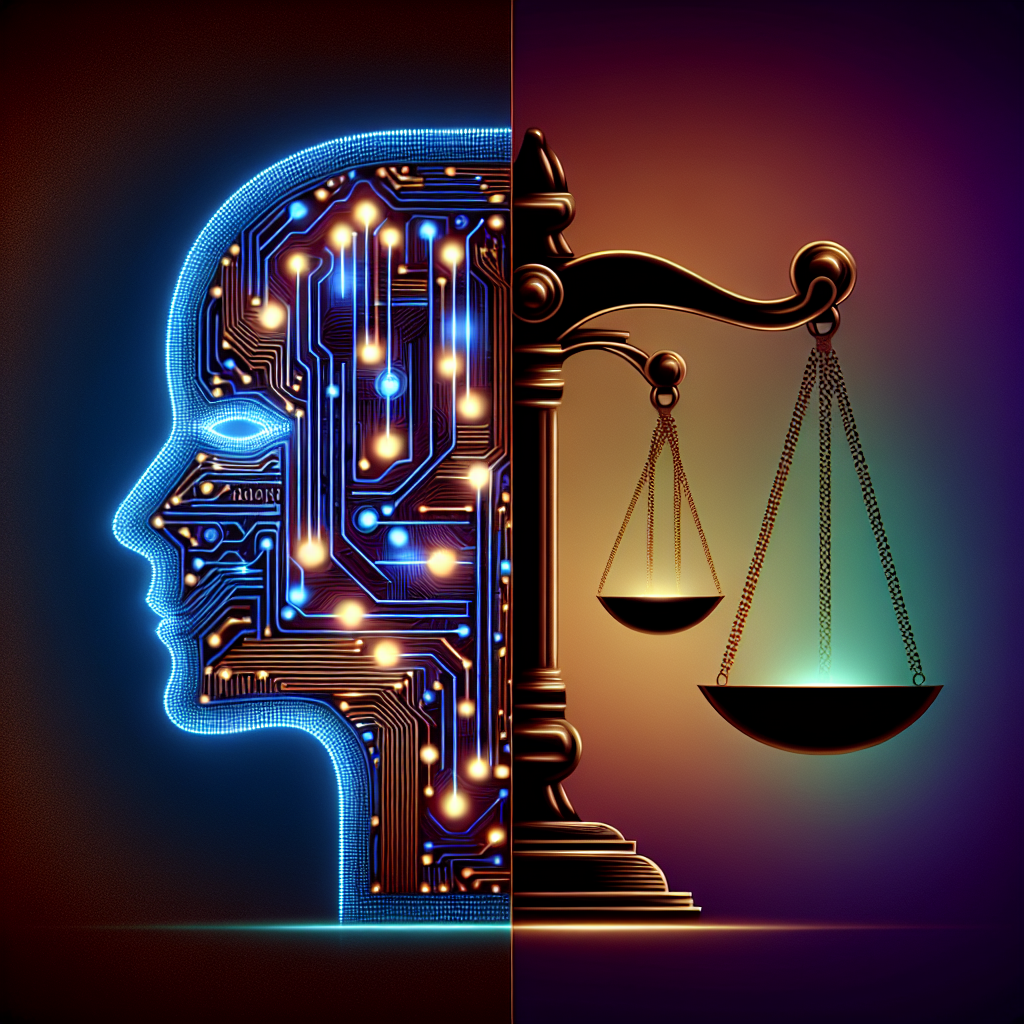The Impact of AI on Criminal Justice Reform
Artificial Intelligence (AI) has the potential to revolutionize many aspects of society, including the criminal justice system. From predicting crime patterns to assisting in decision-making processes, AI has the capacity to improve the efficiency and fairness of the criminal justice system. However, like any new technology, AI also raises concerns about privacy, bias, and accountability. In this article, we will explore the impact of AI on criminal justice reform and discuss the benefits and challenges associated with its implementation.
Benefits of AI in Criminal Justice Reform
1. Predictive Policing: One of the most significant benefits of AI in criminal justice reform is its ability to predict crime patterns. By analyzing vast amounts of data, AI algorithms can identify areas with high crime rates and help law enforcement agencies allocate resources more effectively. This proactive approach to policing can help prevent crimes before they occur and improve public safety.
2. Risk Assessment: AI can also be used to assess the risk of reoffending among individuals in the criminal justice system. By analyzing factors such as criminal history, behavior, and demographics, AI algorithms can provide more accurate and objective risk assessments than traditional methods. This can help judges make more informed decisions about bail, sentencing, and parole, leading to a fairer and more efficient criminal justice system.
3. Case Management: AI can streamline the case management process by automating routine tasks such as scheduling court dates, managing evidence, and generating legal documents. This can help reduce administrative burdens on court staff and improve the efficiency of the justice system. AI can also assist lawyers in preparing cases by analyzing legal documents, researching precedents, and predicting outcomes, saving time and resources.
4. Sentencing Guidelines: AI can help judges determine appropriate sentences by providing guidelines based on factors such as the severity of the crime, the defendant’s criminal history, and mitigating circumstances. By using AI to assist in sentencing decisions, judges can ensure that sentences are consistent and fair across cases, reducing disparities in the justice system.
Challenges of AI in Criminal Justice Reform
1. Bias: One of the main challenges of AI in criminal justice reform is the risk of bias in algorithms. AI algorithms are only as good as the data they are trained on, and if the data contains biases, the algorithms can perpetuate and even amplify those biases. For example, if AI algorithms are trained on data that reflects racial disparities in policing, they may produce biased results that disproportionately impact minority communities. It is essential to address bias in AI algorithms to ensure fairness and equity in the criminal justice system.
2. Privacy: Another challenge of AI in criminal justice reform is the potential for privacy violations. AI algorithms often require access to large amounts of personal data, such as criminal records, social media activity, and biometric information. This raises concerns about how this data is collected, stored, and used, and whether individuals’ privacy rights are being protected. It is crucial to establish clear guidelines and regulations to safeguard privacy rights while harnessing the benefits of AI in the justice system.
3. Accountability: AI systems are often opaque and complex, making it difficult to understand how decisions are made and hold accountable for errors or biases. If AI algorithms make incorrect or biased decisions, it can have serious consequences for individuals in the criminal justice system. It is essential to ensure transparency and accountability in AI systems to maintain public trust and confidence in the justice system.
FAQs
Q: How can AI help prevent crime?
A: AI can help prevent crime by analyzing data to identify patterns and trends that indicate areas with high crime rates. This information can help law enforcement agencies allocate resources more effectively and take proactive measures to prevent crimes before they occur.
Q: How can AI improve risk assessment in the criminal justice system?
A: AI can improve risk assessment by analyzing factors such as criminal history, behavior, and demographics to provide more accurate and objective assessments of the likelihood of reoffending. This information can help judges make more informed decisions about bail, sentencing, and parole.
Q: What are some examples of AI applications in the criminal justice system?
A: Some examples of AI applications in the criminal justice system include predictive policing, risk assessment tools, case management systems, and sentencing guidelines. These applications can help improve the efficiency and fairness of the justice system.
Q: How can bias in AI algorithms be addressed?
A: Bias in AI algorithms can be addressed by carefully selecting and evaluating training data to ensure it is representative and unbiased. Algorithms can also be tested for bias and fairness using metrics such as demographic parity and equal opportunity. Additionally, transparency and accountability measures can help identify and correct biases in AI systems.
Q: What are some privacy concerns associated with AI in the criminal justice system?
A: Some privacy concerns associated with AI in the criminal justice system include the collection and use of personal data such as criminal records, social media activity, and biometric information. It is essential to establish clear guidelines and regulations to protect individuals’ privacy rights while harnessing the benefits of AI in the justice system.
In conclusion, AI has the potential to transform the criminal justice system by improving efficiency, fairness, and public safety. However, the implementation of AI in the justice system also raises concerns about bias, privacy, and accountability. It is essential to address these challenges proactively to ensure that AI is used responsibly and ethically in criminal justice reform. By harnessing the benefits of AI while mitigating its risks, we can create a more just and equitable justice system for all.

